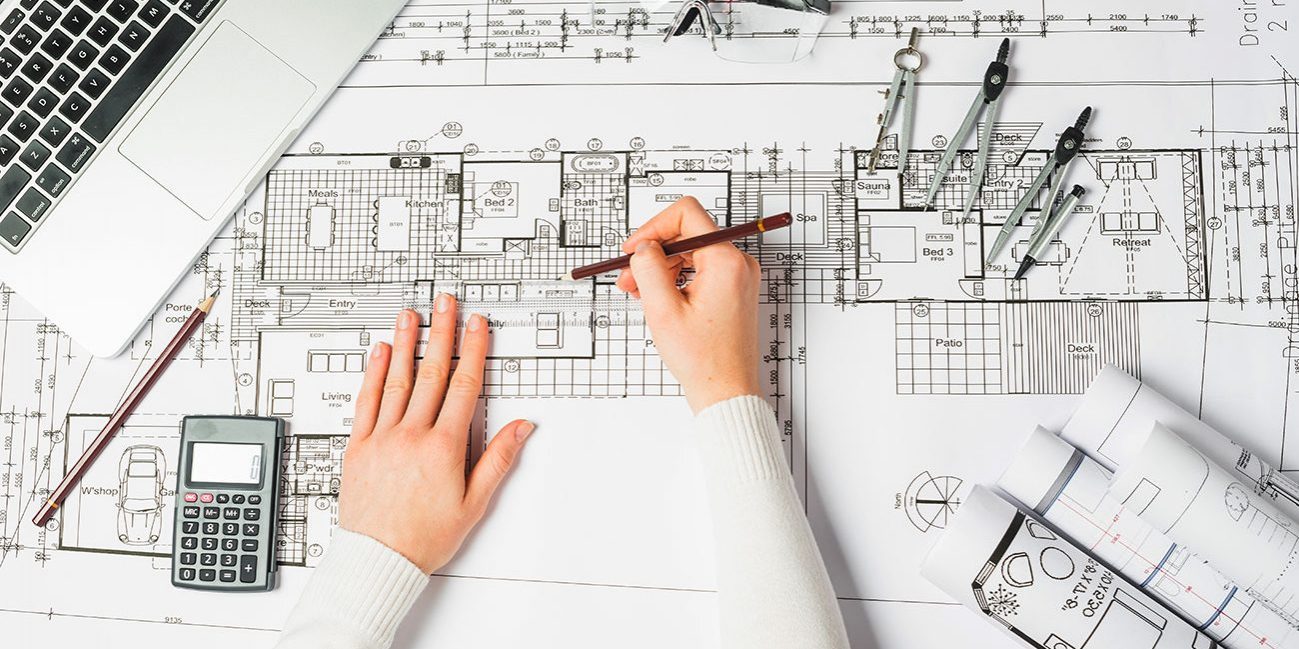Comprehending the Diverse Job Paths Available for Aspiring Architect
As an ambitious Architect, you have a globe of profession paths awaiting you. Each course uses unique challenges and opportunities to apply your creative thinking and technical expertise. Whether you're attracted to conventional architecture or the subtleties of sustainable design, there's a specific niche that straightens with your interests. Recognizing these diverse alternatives can form your expert journey, yet which instructions will you select to explore initially?
Typical Architecture: Creating Structures and Frameworks
Traditional design focuses on creating structures and structures that blend performance with aesthetic allure. As you explore this area, you'll value the complex equilibrium between type and purpose. You'll discover to attract ideas from historical styles, incorporating elements like balance, products, and workmanship. Your designs can show social heritage, showcasing local traditions while satisfying modern-day demands.
You'll establish abilities in drafting, model-making, and site evaluation, permitting you to imagine and interact your concepts effectively. Engaging with customers, you'll require to understand their vision and convert it right into possible designs.
Moreover, constructing codes and sustainability techniques are crucial in your job, guaranteeing your structures are secure and ecologically pleasant. As you expand in your occupation, you'll discover chances in household, industrial, and even restoration jobs, each offering unique challenges. Embracing standard style leads the way for a meeting job that admires the past while forming the future.
Urban Preparation: Forming Areas and Public Spaces
As an ambitious Architect, you can play an essential function as an urban coordinator, changing just how neighborhoods engage and function. By using area interaction methods, you'll assure that residents have a voice in shaping their atmosphere. Plus, integrating sustainable layout concepts will help develop areas that not only fulfill today's demands however likewise secure the future.
Function of Urban Planners
While numerous might think about designers as the sole dreamers behind buildings, city coordinators play a necessary role in forming the more comprehensive landscape of areas and public areas. They evaluate land usage, zoning laws, and area requires to produce sustainable settings that boost lifestyle. By collaborating with numerous stakeholders, you'll assist create parks, transportation systems, and houses that promote social communication and ease of access. Urban organizers additionally concentrate on environmental considerations, guaranteeing that advancements incorporate environment-friendly spaces and support biodiversity. Your experience in spatial style and community characteristics allows you to imagine future development while preserving cultural heritage. In this essential role, you'll straight affect exactly how individuals experience their environments, making every job an opportunity for positive change.
Area Interaction Methods
Effective area involvement strategies are important for city organizers to ensure that the voices of homeowners are heard and valued in the planning process. To cultivate meaningful dialogue, you should prioritize open forums and workshops where community participants can reveal their concepts and worries. Use surveys and social networks to get to a broader audience, making certain diverse point of views are consisted of. Collaborating with regional companies can enhance trust and facilitate deeper links. It's important to give clear information concerning suggested projects and decision-making processes, permitting homeowners to really feel enlightened and empowered. By actively including and paying attention feedback, you'll produce spaces that reflect the neighborhood's needs, inevitably resulting in even more sustainable and effective city environments. Accept openness and continuous dialogue for lasting impact.
Sustainable Design Concepts
When developing metropolitan areas, integrating sustainable design concepts is essential for producing atmospheres that thrive both ecologically and socially. Consider integrating green rooms, like parks and gardens, to boost biodiversity and boost air top quality.
Creating with water conservation in mind is also key-- believe concerning rain yards and permeable surface areas to take care of stormwater. Involving area members throughout the planning process guarantees that the areas you produce fulfill their demands and motivate social interaction. By embracing these concepts, you'll add to lively, sustainable urban landscapes that profit everybody.

Landscape Design: Developing Lasting Outdoor Atmospheres
As you explore landscape design, you'll uncover necessary layout principles that develop practical and attractive outside spaces. Sustainable techniques play a crucial duty in ensuring these environments thrive while reducing ecological influence. Plus, you'll locate a selection of career chances that allow you to make an actual distinction in just how individuals connect with nature.
Design Principles in Landscape
Recognizing style concepts in landscape style is crucial for developing sustainable outdoor settings that harmonize with nature. You'll require to ponder aspects like percentage, equilibrium, and scale to guarantee your designs really feel natural and welcoming. Furthermore, pay focus to seasonal modifications, here making with products that complement the surroundings year-round.
Sustainable Practices Introduction
Lasting practices in landscape design not just focus on appearances yet also prioritize eco-friendly wellness and resource preservation. You can make rooms that advertise soil health, such as practicing and utilizing organic products permaculture concepts. Inevitably, these techniques guarantee your designs profit both people and the setting for years to come.
Profession Opportunities Exploration
With a solid foundation in lasting practices, landscape design supplies a selection of occupation paths that allow you to make a meaningful influence on the environment. You can function as a landscape designer, producing cosmetically pleasing and practical outdoor areas, or concentrate on ecological remediation, assisting to revitalize damaged ecosystems. Urban organizers usually work together with landscape architects to develop green areas in urban settings, enhancing city livability. If you're enthusiastic concerning education, take into consideration coming to be a landscape architecture educator, motivating future generations. Additionally, you could deal with nonprofits concentrated on ecological sustainability or involve in research study to introduce new methods. Each course not just shapes lovely settings however also fosters a much healthier world for future generations.
Lasting Design: Concentrating On Eco-Friendly Practices
As you discover your occupation in style, embracing green techniques can establish you apart in an affordable field. Lasting layout concentrates on creating buildings that lessen ecological influence while improving occupant well-being. By incorporating renewable products, energy-efficient systems, and sustainable building techniques, you'll contribute to a greener future.
Beginning by gaining knowledge of environment-friendly accreditations like LEED or BREEAM, which can reinforce your qualifications. Consider exactly how natural light, air flow, and thermal effectiveness can enhance design. Work together with engineers and ecological specialists to introduce remedies that lower waste and preserve sources.
Don't forget the relevance of area involvement-- interesting local stakeholders can influence designs that integrate with the atmosphere. As customers significantly focus on sustainability, your expertise in environment-friendly practices will certainly not only attract tasks yet additionally satisfy your passion for liable style. Accept this important element of the occupation, and view your career flourish.
Historical Conservation: Safeguarding and Restoring Social Heritage
While you begin on website your building trip, consider the important duty of historical preservation in keeping our social heritage. This area concentrates on the protection and remediation of significant structures, websites, and structures that tell the tales of our past. By participating in historic conservation, you'll aid safeguard the architectural heritage that shapes community identity.
As a historic conservation Architect, you'll assess historic significance and examine the condition of structures. You'll work very closely with chroniclers and conservationists to assure authentic reconstruction methods are employed. This job path enables you to mix creativity with research, enabling you to design remedies that appreciate initial products and workmanship.
Your job not just adds to sustainability by recycling existing structures but also fosters a sense of satisfaction within areas. Embracing this path will certainly help you end up being a guardian of history, protecting the tales and aesthetic appeals that enrich our lives.
Interior Style: Enhancing Indoor Spaces
Historic conservation and interior architecture both share a dedication to enhancing the developed atmosphere, however they concentrate on various aspects. While historic preservation highlights keeping a structure's cultural and historical worth, indoor style absolutely nos in on maximizing indoor spaces for capability and looks.
As a hopeful Architect, you'll find that interior design permits you to mix creative thinking with technical abilities. You'll create spaces that not just look excellent however likewise advertise convenience and effectiveness. This field entails recognizing exactly how light, color, and products connect within an area, influencing mood and use.
You'll work with different tasks, from domestic homes to business workplaces, ensuring that each environment meets the requirements of its occupants. By prioritizing user experience, you can change insides into useful and motivating areas, making a substantial effect on how individuals communicate with their environments. Accept the possibility to boost interior atmospheres and form the way people work and live.
Industrial Style: Combining Performance With Aesthetic Appeals
Commercial layout plays a crucial duty in developing items that flawlessly blend looks with capability, ensuring that what you make use of everyday is not only aesthetically enticing but additionally sensible. As a hopeful Architect, you might involve on your own in this area, concentrating on making every little thing from furnishings to customer electronic devices. Your job includes understanding customer needs, materials, and manufacturing processes, allowing you to create innovative services that enhance day-to-day experiences.
In commercial style, you'll typically collaborate with manufacturers, designers, and marketing experts, ensuring that your designs are not only attractive however additionally possible. You'll find out to balance type and function, focusing on functionality without sacrificing style. By honing your skills in laying out, 3D modeling, and prototyping, you'll be well-appointed to bring your concepts to life. This job course supplies a dynamic atmosphere where imagination meets usefulness, making it a satisfying option for engineers interested in forming the items of tomorrow.
Frequently Asked Questions
What Educational Credentials Do I Need to End Up Being an Architect?
To come to be an engineer, you'll require an expert degree in architecture, usually a Bachelor's or Master's. Additionally, you'll need to finish an internship and pass the Architect Registration Evaluation to exercise legitimately.
Are There Certification Needs for Different Architectural Job Paths?
Yes, there're accreditation requirements for various architectural courses. Architect. You'll need to pass exams, total teaching fellowships, and occasionally go after specialized training, depending on your chosen focus, like landscape architecture, city layout, or historical conservation
What Software Program Abilities Are Crucial for Architects Today?

Just How Can I Gain Practical Experience While Studying Architecture?
You can get useful experience by interning at building firms, participating in design competitors, volunteering for community tasks, or collaborating with classmates on real-world projects. These opportunities boost your skills and build beneficial links in the market.
What Job Opportunities Exist Outside Conventional Style Firms?
You can explore numerous work opportunities outside typical design firms, like city planning, indoor layout, landscape design, construction administration, realty development, and even roles in sustainability consulting. Each offers unique challenges and incentives.
Whether you're attracted to traditional design or the subtleties of sustainable layout, there's a particular niche that straightens with your interests.When creating urban spaces, integrating sustainable design concepts is essential for developing atmospheres that flourish both environmentally and socially.As you explore landscape design, you'll discover essential layout principles that produce functional and beautiful outside spaces.Recognizing style concepts in landscape style is crucial for developing sustainable outdoor settings that harmonize with nature.In commercial layout, you'll frequently collaborate with marketers, designers, and makers, ensuring that your layouts are not just beautiful yet likewise possible.